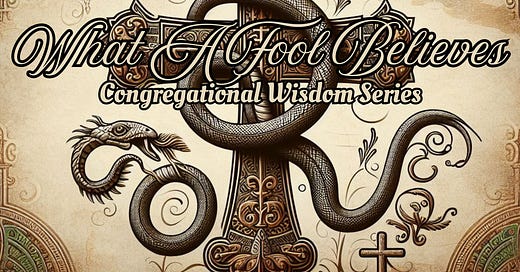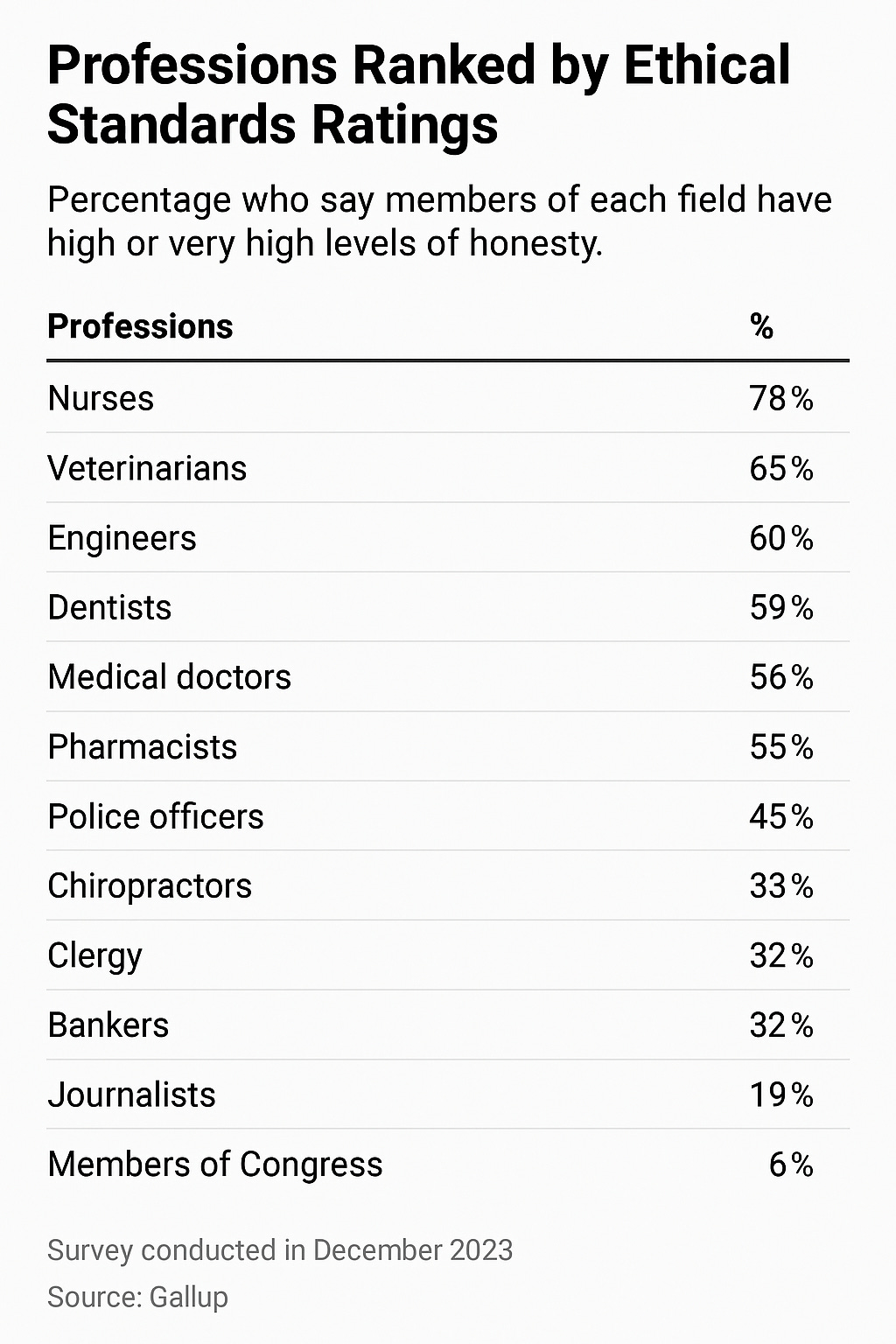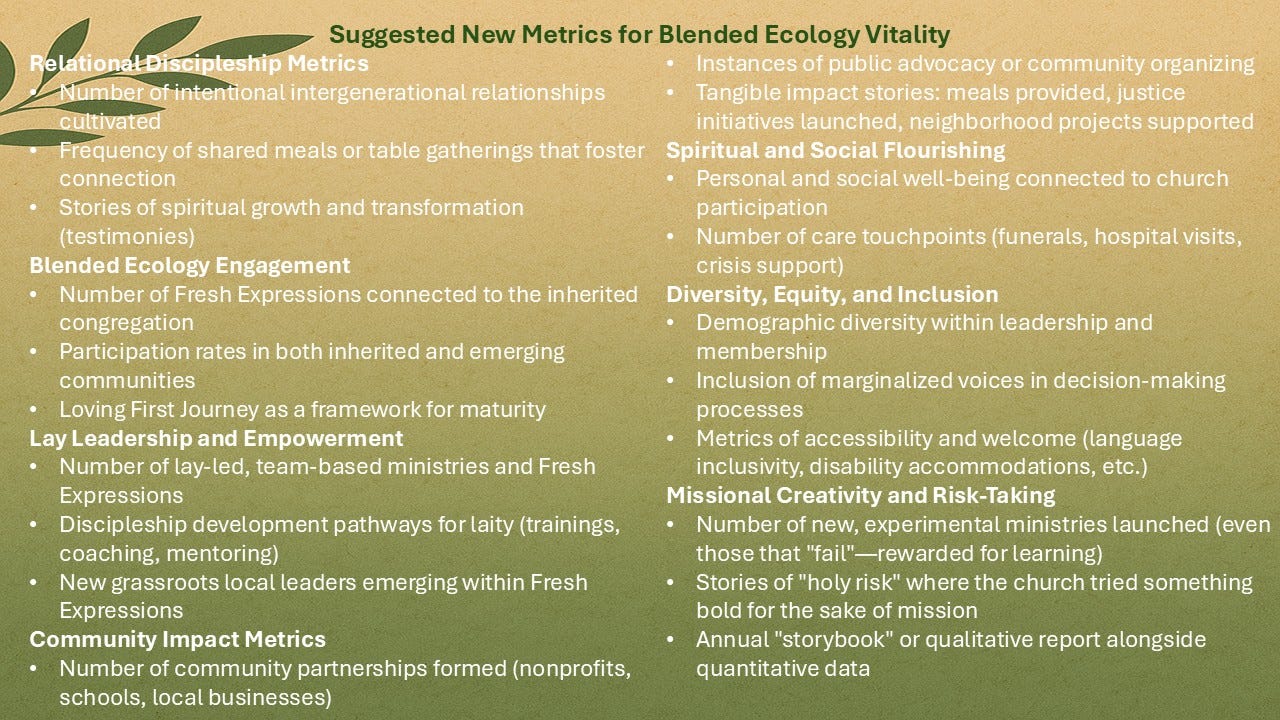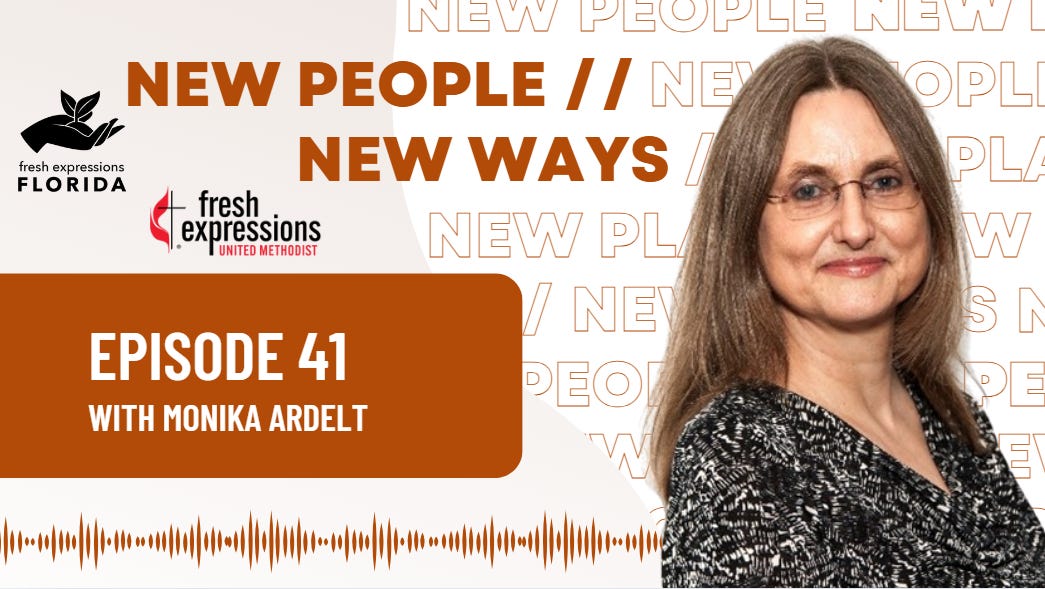“We all know that pastors inflate the numbers,” chuckled one of the anonymous lay leaders in the focus group. “That’s true, but why have we created a system in which clergy feel they need to inflate their numbers?” responded another. The proverbial mic dropped to the floor. The group sat in silent pondering.
Consider that question for a moment. Do institutional metric systems unintentionally incentivize dishonesty among pastors?
Afterall, clergy should be the specimen of integrity, known for being honest right? It’s an attribute of a person practicing the way of Jesus. However, a recent Gallup survey reveals a significant decline in Americans’ trust in nearly all professions, with clergy now receiving their lowest-ever ethical ratings at 32%. In a sobering twist, chiropractors (33%) are now more trusted than pastors (no offence to chiropractors), though clergy still at least outrank lawyers (16%) and members of Congress (6%).1
While trust in all professions has generally dropped, the consistent takeaway is this: even as clergy’s standing slips, there remains a profound challenge for faith leaders to regain public trust and embody the wisdom and integrity the world so desperately needs. The running joke that pastors inflate their numbers, is not helpful in rebuilding that trust.
But let’s take a step back and employ what C. Wright Mills (1959) first identified as the “sociological imagination” (more recently called the “sociological perspective”). Sociological Perspective helps us see how personal choices and behaviors are shaped by larger social forces. Sociology reminds us that what we do and how we think are deeply influenced by the historical context we are born into and the social structures that surround us.
This framework allows us to connect personal troubles with broader public issues, to see beyond individual circumstances and understand the structural forces shaping our lives. When we look at declining trust in clergy, for instance, we’re not just examining a private matter of individual pastors behaving badly. We’re stepping into a much bigger conversation about cultural shifts, institutional power, moral authority, and the stories we tell about who deserves our trust.
One component of these structural forces is the metrics we use in the church.
Metrics matter. They are not just neutral tools, they are part of the social mechanism that shapes our behaviors, values, and collective imagination. The ways we count, measure, and report in our faith communities have a profound impact on how we perceive success, what we prioritize, and even who we see as faithful. When we prioritize attendance and budgets over relationships and presence, we risk distorting the very mission of the church into something Jesus never intended.
“What gets measured gets done.”
That phrase echoes in boardrooms, pulpits, and strategy sessions across the world. It’s the rallying cry of modern leadership. The mantra of the metric-makers of the managerial era. The legitimating narrative for planners, strategists, and consultants who, with the best of intentions, believe that quantifying the right things will lead to the right outcomes.
But what if we’ve been measuring the wrong things?
What if the very act of measurement, the metrics themselves, are shaping us, not into the image of Christ, but into anxious, performance-driven institutions that have lost the plot of the gospel?
What if the metrics we use are not neutral tools, but theological statements—liturgies, even—that shape our collective imagination, our priorities, and ultimately, our souls?
Measuring the World
In her landmark study, Measuring the World, legal anthropologist Sally Engle Merry warns that indicators—those tidy numbers we so often rely on—aren’t just passive descriptors of reality.
Merry’s work is foundational to indicator theory. She maps the history of indicators which are statistical measures that consolidate complex, context-dependent realities into a single number or ranking designed for policymakers, funders, and the public. Merry argues that they transform messy, nuanced social phenomena into seemingly objective, comparable data, producing an aura of certainty, neutrality, and authority. Indicators are not value-neutral, they embed theories and assumptions about what matters, shaping behaviors, distributing power, and often reproducing inequality. Indicators become a technology of governance, subtly directing how people, organizations, and entire nations behave to meet predefined standards.2
Thus, indicators create reality. Metrics don’t simply measure what is… they program what becomes. Metrics, once established, shape behavior. They define success. They become the standard against which we evaluate ourselves and others. They flatten complex, messy, beautiful realities into something that can be counted, ranked, and compared. And they carry an aura of objectivity, a veneer of neutrality, that hides the power they exert.
Merry calls this the “knowledge effect” and the “governance effect” of metrics. They create a world where only what is measurable counts, and they drive the behaviors of those within the system to conform to what is being measured.
Sound familiar? Our churches are not immune.
Mapping the Metrics
In response to growing concerns that existing metrics for congregational vitality fail to capture the depth of spiritual life, the Mapping the Metrics study explores how vitality is currently defined and measured (specifically in the UMC). Using qualitative methods like content analysis and focus groups, the research found that metrics focused on attendance, finances, and programs often distort priorities and overlook values like compassion, wise moral discernment, and communal well-being. The 39 conferences involved are calling for a more holistic and spiritually grounded approach to measuring church health.
In Study 1 of the research, not a single participant believed that current metrics reflect an accurate picture of vitality. Some said:
"Metrics feel like a surveillance system."
"We are chasing numbers, not nurturing souls."
"The current system incentivizes growth at all costs, but it’s killing us."
“Nobody seems to know what happens to the data we collect, or how it’s used.”
“Filling out those reports is a waste of time. They do not help us as we try to minister to our community.”
“As a district superintendent, I don’t even look at the reports. They are inaccurate and not a factor in appointment making for me.”
Attendance. Membership. Giving. Apportionments. These are the numbers that dominate vitality reports. Again, these metrics don’t just report on reality, they create the reality we keep perpetuating. They turn pastors into anxious managers. They turn congregants into passive consumers. They shape a system where survival becomes more important than service and where being “vital” means having more people in pews, not more love in the streets.
Before vile-tality become a common phrase in Methodism, I was the first to suggest that if Methodism would ever become vital again, it would need to become vile again. Drawing from John Wesley’s example of “submitting to be more vile” through field preaching, I suggested we must embrace the risk and vulnerability of stepping outside familiar structures to meet people where they are.3 The Fresh Expressions movement is a Spirit-led opportunity to recover the church’s missional DNA, offering a path to revilization for congregations willing to get their hands dirty in the work of love, justice, and community.
However, this is not a call to discard existing metrics. In another sense, measuring attendance, money, and membership is important, these indicators provide a snapshot of how people are engaging and resourcing the mission. But these numbers are only part of the story, especially as the blended ecology becomes the normative reality of most local churches. If we only measure what’s easy to count, we risk ignoring the deeper, messier work of spiritual formation, community connection, and lived-out love that are at the heart of the church’s mission.
Measuring Matter and Metrics that Matter
Let’s talk about metrics and matter. Let’s talk about the metrics that actually matter.
First, step back and ask a more fundamental question:
What is the church for? Why does she exist?
If the church is called to be the body of Christ—the tangible, incarnate presence of God’s love in the world, then shouldn’t our metrics reflect that reality? Shouldn’t they measure the ways love becomes “matter,” as in “anything that has mass and takes up space.” Is the true mark of a church’s vitality how it forms people in the way of Jesus and the impact it makes in the world? Does a local church foster social cohesion, promote well-being, and support spiritual growth and prosociality, ultimately enriching the conditions of its neighborhood?
If every local church (fresh expression or inherited) is the matterized (yes that’s another made up word) flesh and blood of Jesus, is that a reality that can even be measured? This is where we can no longer be content with siloed disciplines, formulating theorems from segregated departments in our ivory towers of academia. We need interdisciplinary research that integrates learning from various fields. If in Jesus’s peaceable kingdom, “The wolf shall live with the lamb; the leopard shall lie down with the kid; the calf and the lion will feed together,” (Isaiah 11:6) then surely the sociologist and the theologian can work at the same desk, and share the same instruments.
Love is not abstract. It’s embodied. It shows up in casseroles baked for grieving families, in tears shed at the bedside, in hands held across political divides, in meals shared with the lonely, in advocacy for the oppressed, in the building of bridges across differences.
This is love made matter and yes, we sociologists measure these things! These are the metrics that matter. Not merely by how many attended. Not by how big the budget. Not by how slick the programs. But by love. Love that takes up space. Love that becomes matter.
Imagine a church where the annual report was not only a spreadsheet of numbers but a storybook of love.
This is the vision that the participants in the Mapping the Metrics report point us toward: a call for metrics that quantify and nurture spiritual depth, relational connection, and contextual faithfulness. A shift from “counting metrics, to learning metrics,” from “surveillance to support.”
What metrics are shaping your church’s behavior?
Are they forming you in love—or deforming you into an anxious, performance-driven system?
Let’s be holy fools who measure the ways love becomes matter, and trust that in doing so, we are participating in the foolishness of God that confounds the wisdom of the world. Perhaps we can begin to rebuild trust in a world disillusioned with the chaplains of empire.
Together, let’s create a new way of seeing, measuring, and living the way, truth, and life of Jesus.
Below are a few suggested new metrics that emerged from the missional metrics cohort. Stay tuned as we go deeper in the coming weeks!
Let’s continue the conversation. Share your reflections below or in the Congregational Wisdom Circle Facebook group. What metrics are you using in your church? What do you wish we were measuring instead?
New Podcast Episode Alert!
In this episode, Michael and Jessica sit down with Dr. Monika Ardelt, a leading wisdom scholar, for a deep dive into the science of wisdom—and why it matters now more than ever. We explore the 3D Wisdom Scale, wisdom and aging, bad theology, organizational health, and how churches can actually cultivate wisdom in a rapidly changing world. If you care about the future of the church, leadership, or just becoming a wiser human, you do not want to miss this one.
Altogether Now: Seven Generations and Beyond
February 26–28, 2026 | Ocala, Florida
What if the future of the church wasn’t sealed behind stained glass, but planted in dog parks, gyms, tattoo parlors, and recovery circles? Join us in Ocala—ground zero for the Fresh Expressions movement in the U.S.—as we dream, co-create, and become the church the world needs.
Let’s gather across generations, cultures, and denominations to embody love, justice, and grace—altogether now.
Register now—pay what you can.
#FXUM26 #FreshExpressions #AltogetherNow #SevenGenerations #ChurchReimagined
Download the free ebook: Church Planting for Everyone
Discover simple, practical ways to start new faith communities in unexpected places. This guide offers tools, stories, and a fresh vision for building a church that reaches people where they are.
Get your copy and join the movement today!
Brenan, M., & Jones, J. M. (2024, January 22). Ethics ratings of nearly all professions down in U.S. Gallup. https://news.gallup.com/poll/608903/ethics-ratings-nearly-professions-down.aspx
Merry, S. E. (2011). Measuring the world: Indicators, human rights, and global governance. Current Anthropology, 52(S3), S83–S95. https://doi.org/10.1086/657241
Beck, Michael Adam with Jorge Acevedo (2020). A Field Guide to Methodist Fresh Expressions (Abingdon Press, Nashville, TN).












Good stuff Professor Beck. I'm hopeful this is a turning point for our church. Thanks for helping us understand the systemic issues with our current metrics.
This is solid gold.